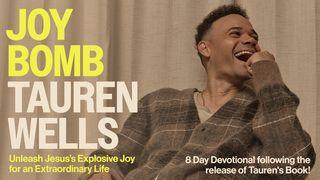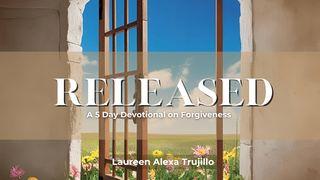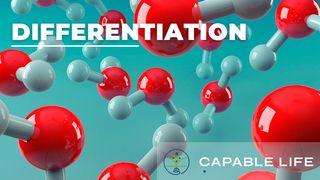Life, Ministry & Identity of JesusSample

Miracles of Jesus: In Front of the Text
Discussion about who Jesus is was a major topic in the Early Church, and it’s still a topic of debate in academia. Let’s see how all of that relates to us.
The Quests for the Historical Jesus
Ancient Alternatives to the Gospels
Once the four New Testament Gospels were accepted as official, the differences between them tended to be viewed as complementary perspectives of one common history rather than as a threat to the Bible’s reliability. In the second and third centuries, many other apocryphal legends and stories about Jesus emerged, including the Gospels of Thomas, Mary, Judas, and Philip. The Early Church rejected these as false Gospels and inaccurate accounts of the life and ministry of Jesus Christ.
The First Quest for the Historical Jesus
In the 18th century, a wave of skepticism moved through universities, preferring an “enlightened” approach to history and historical sources. The reliability of the Bible was questioned, including its official accounts of Jesus in the four Gospels—now viewed as contradictory rather than complementary. The assumption was that the New Testament is evidence of a “Christ of faith” rather than of a “Jesus of history”—a phrase coined in 1892 by Martin Kohler. Historians in the 19th century wrote many “Lives” of Jesus, which were considered more accurate. But in retrospect, these biographies were hardly objective, exhibiting at least three common tendencies:
1) Impose some grand scheme or hypothesis upon the Bible’s version of Jesus that would allow everything he said or did or was to be interpreted within a consistent paradigm (for example, Jesus was a “social reformer” or “religious mystic”).
2) Exclude material in the Gospels that did not fit with this paradigm, submitting the biblical record to the author’s critical judgment of what seemed most likely to be true.
3) Include personal reflection about Jesus not derived from the Gospels, attempting to fill in gaps in the biblical record with the author’s own projections concerning Jesus’ motivations, goals, or self-understanding.
Reference: Mark Allan Powell, Jesus as a Figure in History: How Modern Historians View the Man from Galilee, 1998, pp. 1-51.
The Second Quest for the Historical Jesus
A “Second Quest” attempted to replace the subjectivity of the First Quest with collective and systematic approaches to Jesus as a historical figure. Rather than writing comprehensive biographies of Jesus, it sought to authenticate or disprove individual aspects of the Gospel stories. A number of criteria were used in this sifting process, popular during the 1950s and 60’s:
1) The criterion of dissimilarity: Because it would have been easy for the Gospel writers to attribute to Jesus things that were typical of any first-century Jew, Käsemann suggested that it was those things that are unexpected or unusual about Jesus that were the least likely to be made up.
2) The criterion of embarrassment: The New Testament writers would not have made up anything about Jesus that would make him look bad to a broader readership. For example, a “Messiah” who was brutally murdered and publicly humiliated would be an embarrassment to both Jewish and Roman sensibilities. This makes the account of the crucifixion all the more likely.
This “Quest” turned out to be just as subjective and failed to bring consensus to reconstructing a historical Jesus.
The Third Quest for the Historical Jesus
In the 1980s, scholars continued to develop and refine the assumptions of the Second Quest. One issue typical of the “Third Quest” is the criterion of congruence. Rather than starting from scratch, scholars built off earlier conclusions and compared more uncertain parts of the Gospels with those they had already determined to be authentic. Many of the debates and issues raised in the “Quests” continue to this day in Gospel studies.
One quote, usually attributed to Albert Schweitzer (but more accurately reflecting George Tyrrell's words), sums up the unexpected results of this project: “When scholars look down the deep well of history at the evidence for Jesus, they tend to see a reflection of themselves.”
While we do not want to dismiss the importance of historical research, we do want to beware of the tendencies for all of us to recreate Jesus “in our own image.”
Source: Stanley E. Porter, Criteria for Authenticity in Historical-Jesus Research, 2000.
For Bible Journey's complete study of the Life, Ministry, & Identity of Jesus, go to www.biblejourney.com. Please subscribe to the Bible Journey YouTube channel of videos of the Holy Lands to help us reach many more individuals with the Gospel!
About this Plan

Have you ever wished for a Bible study that could take you beyond surface-level reading? If so, get ready for our journey through the Life, Ministry & Identity of Jesus! You'll get to immerse yourself in Scripture (by looking at key terms and ideas), explore what's behind it (by learning historical-cultural background), and also discover its impact by considering its implications, not only for you but for the global church. Let's dive in!
More
Related plans

God Is Writing Your Story

Unsinkable Hope: God’s Promises and Your Mental Health

Commissioned: Powered Up: Living With the Holy Spirit

Joy Bomb: A 8-Day Devotional by Tauren Wells

Released

Darkness to Destiny: Unleashing God’s Power in a Dark World

Commissioned: Testimony: Your Story for Their Ear

7 Days to Phone Freedom

Jesus Never Caught Anxiety
